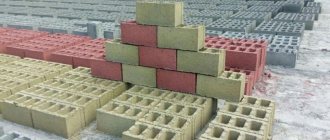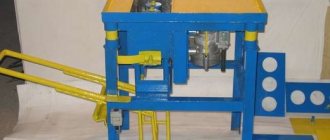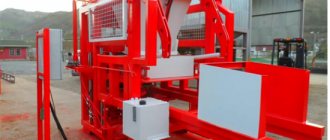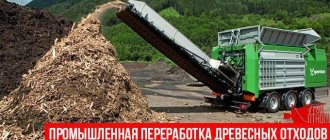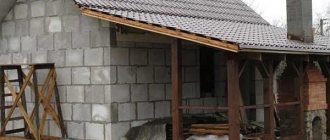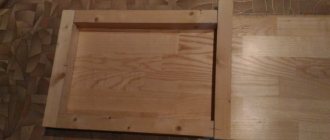How to make a cinder block machine
First, let's decide what goals we set for ourselves. If we need to build a small utility room, a barn, a summer kitchen or a temporary shed, this is one thing. In the same case, if we are going to sell cinder blocks, then the approach to its production should be completely different. Firstly, mass production of cinder blocks requires stability of the recipe, otherwise it will be simply impossible to produce high-quality cinder blocks. Secondly, the machine for making cinder blocks with your own hands, the drawings of which we have given right here, is not intended for large-scale production for obvious reasons.
The reliability and performance of a machine assembled from just about anything cannot be compared with a machine made in production conditions, where there is at least a hint of a quality guarantee. However, making a couple of hundred cinder blocks is not prohibited for anyone yet, so we present drawings with dimensions for a vibrating machine.
Design Features
The performance of the vibrating platform and the geometry of the finished products depend on the equipment. One of the main elements is the matrix, which is a steel box without a bottom. The matrix is installed on a pallet or on the surface of the extruder. Many models involve the use of the floor as a formative element. A punch is mounted above the matrix, driven by an electric motor, hydraulic drive, or manually using a lever block. The shape of the plane of the punch that exerts pressure on the solution must correspond to the geometry of the front part of the product.
Do-it-yourself cinder block manufacturing technology
You can make a cinder block in a chicken coop, depending on what quality requirements you place on it. The general principles and technology for making cinder blocks are no different from industrial ones. Cinder block has standard sizes, shape and characteristics. We can achieve the shape ourselves, depending on the level of skill and degree of proficiency in welding, lathe, grinder and basic metalwork tools.
Be that as it may, the cinder block should measure 39x19x188 and have three holes in the body. These are linear characteristics only. If we talk about physical and technical issues, there is no guarantee that a garage cinder block will meet the standards. In any case, it will be different from the industrial one, for better or for worse.
To make a mixture for cinder block, the following materials are used:
- Slag.
- Sand.
- Cement.
- Modifying additives.
The correct cinder block can only be obtained using the vibration pressing method, which is worth familiarizing yourself with in more detail.
Types of forms for foam concrete
Metal prefabricated formwork for foam concrete
Formwork for foam concrete is classified according to several criteria:
- According to the material from which it is made - wood, plywood, plastic, foam, metal;
- According to the parameters - for large and small wall blocks, for tongue-and-groove blocks;
- By design - completely collapsible or a solid base with mobile partitions. The first ones are very easy to store and transport, since all the elements when disassembled take up little space, while the second type is more reliable in operation.
Also, formwork for foam blocks can be characterized by its type of production, namely cast and cutting. In the first case, the equipment must have form-building partitions, when cast equipment simply requires a reliable frame.
Formwork for driving monolithic foam concrete and its subsequent cutting
If you have an organized production of cast foam concrete, then sometimes you practice cutting blocks, it is not necessary to purchase additional formwork for the monolith. If you do not install partitions, you can get an option for equipment for cutting technology.
In order for the blocks to be obtained with precise parameters, and the entire work process to be simplified as much as possible, it is necessary to select forms for the blocks that meet certain requirements.
What is a vibropress
Roughly speaking, a vibropress is a powerful table, the tabletop of which is suspended on springs or in another way. The vibration of the tabletop occurs due to a shift in the center of gravity in the eccentric, which is attached to the output shaft of the electric motor.
There are several types of suspension of a vibrating plate - spring suspension, on rubber cushions, or cables. A strong frame must stand securely and steadily on the ground while the vibrating plate compacts the cinder concrete mixture. In industrially manufactured machines, a balancer with a shifted center of gravity is installed directly under the vibrating plate and is rigidly attached to it. Homemade vibrating tables use different balancer drive schemes, but basically it is a belt drive, and this design has the reliability and quality of cinder block manufacturing.
How to make a matrix with your own hands
The mold for making a cinder block is the most important thing in the process and the most important thing in the configuration of the machine. Without the correct shape, the whole point of making a cinder block yourself becomes a useless circle of Skillful Hands. The more irregularities and voids there are in the cinder block, the longer the wall will take to build, and the poorer the quality of the masonry will be. During the manufacturing process on a vibrating table, slag concrete tends to shrink, and this is quite natural, since the whole point of the vibrating table is to compact the solution as much as possible, driving all the air out of it.
If the matrix does not take this into account, the cinder blocks will be of different sizes, and it will be very difficult to make normal masonry from them. Therefore, professional machines also use a press to quickly stabilize the mixture. The matrix drawings and the step-by-step process of its manufacture require no explanation. Everything is clearly visible in the photo, and by observing these dimensions, you will get the perfect cinder block.
Cinder concrete blocks - characteristics and purpose of the material
One of the reasons for the increased popularity of slag-filled concrete blocks is the low cost of the material. It is associated with the use of waste from metallurgical enterprises - slag - in the production process.
Along with traditional components, Portland cement and river sand, various aggregates are used:
- brick break;
- crushed stone screening;
- granite chips;
- various slags and ash;
- expanded clay particles.
The use of cinder blocks in construction allows you to reduce the cost of constructing walls several times.
The manufacturing process is carried out in various ways:
- industrial method at specialized enterprises with processing of products in drying chambers;
- at home from available raw materials, using a self-assembled machine for making blocks.
Using homemade equipment you can produce various types of slag concrete products:
- full-bodied, with an increased margin of safety. They are used quite rarely, as they retain heat less well;
- hollow, characterized by high thermal insulation properties. To ensure strength, the volume of cavities should not exceed 1/3 of the total volume of the product.
The dimensions of the products are determined by the dimensions of the mold. When making products yourself, the size of the molding box can be any. However, many people prefer the standard dimensions of 19x18.8x39 cm.
The increased volume of the slag concrete block can significantly reduce the duration of various types of construction work:
- construction of capital walls;
- construction of internal partitions.
It is perfect for the construction of utility buildings, sheds, and storage buildings.
If you need to make a cinder block yourself, the machine allows you to quickly solve the problem. The resulting material has many advantages:
- high thermal insulation characteristics. Due to reduced thermal conductivity, the material prevents heat loss;
- increased dimensions and low weight. This makes it easy to transport products and quickly build walls from them;
- resistance to the development of microorganisms. This is achieved due to the properties of the slag included in the structure of the block;
- low price. A cinder block machine with your own hands allows you to make products that are cheaper than purchased blocks.
The advantages also include the fact that slag-filled blocks are easy to machine, effectively absorb various noises, and are not afraid of elevated temperatures.
The material also has weaknesses:
- low durability. The period of operation of buildings made of slag concrete is up to three decades;
- reduced safety margin. The characteristics of the material allow the construction of buildings no more than two floors high;
- the appearance of cracks under the influence of shear forces. During shrinkage, cracking occurs along the cinder block mass.
Read also: How to make a chuck for a mini drill
To ensure an attractive appearance of buildings, the cinder block surface needs external cladding. These disadvantages do not stop developers who want to build a utility building or a small building in a limited time at low costs.
You can use homemade cinder blocks a month after they are made.
Composition of the mixture for cinder block
There is no single universal composition. The most important component of cinder concrete is cement. The slag can be any material:
- coal ash;
- blast furnace slag;
- expanded clay;
- granulated slag;
- boiler slag;
- processed sawdust.
As well as a wide variety of mixtures of these slags. As a rule, the cement used is M400 grade, and sifted quartz sand is preferable. It is mandatory to add plasticizers to the solution, modifying additives that change the properties of slag concrete depending on specific circumstances. It is recommended to follow the following mixing proportions:
- slag - 7 parts;
- cement M400 - 1.5 parts;
- sand - 2 parts;
- water - as needed, but no more than 3 parts.
As you can see, making a cinder block with your own hands is not so simple, but if you try and show patience and skill, everything will definitely work out.
